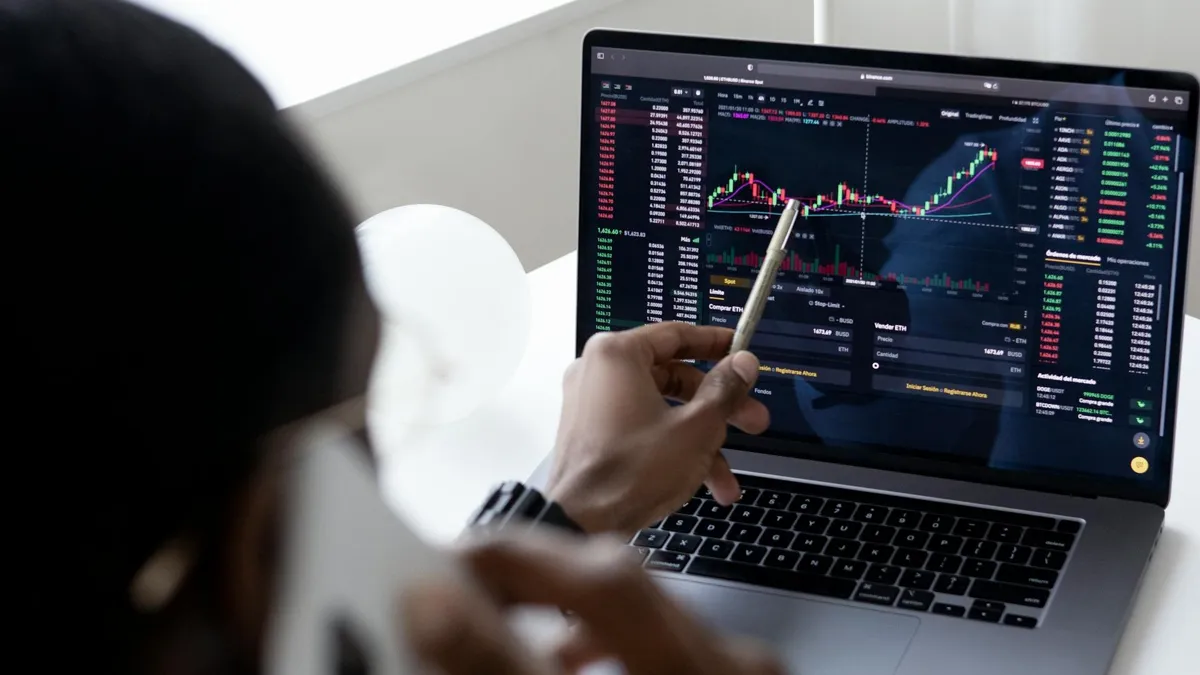Why Are Stocks, Gold, and the Dollar Surging?
One possible explanation for the boom in equities is the rapid emergence of artificial intelligence since late 2022

CAMBRIDGE – The US stock market has been on a tear over the past two years. The S&P 500 has increased by roughly 40% since President Joe Biden assumed office in January 2021 and, along with the Dow Jones and NASDAQ, is repeatedly setting new records. Moreover, the dollar has strengthened sharply against every major currency, while the price of gold surged to an all-time record of $2,470 an ounce earlier this month.
Economists and commentators have struggled to explain these trends. While the increase in gold prices could be attributed to elevated risk perceptions stemming from political and geopolitical uncertainties, this explanation does not account for the booming stock market. Conversely, the decline in the VIX volatility index since 2022 might explain the US stock-market rally but not the spike in gold prices.
One possible explanation for the boom in equities is the rapid emergence of artificial intelligence since late 2022, which has caused shares of companies like chip maker NVIDIA to skyrocket. But while the tech sector has experienced the biggest gains and attracted the most attention, the market has been rising steadily across the board, even excluding tech stocks.
Some believe that the explanation for the rising prices of stocks and gold lies with US monetary policy. US interest rates have risen over the past two and a half years, including long-term rates. This should have reduced stock and commodity prices. Typically, stock markets fall when interest rates rise, assuming other factors remain unchanged. The reason is that interest-rate hikes reduce the present discounted value of future corporate earnings, prompting investors to shift from equities to bonds. Moreover, the price of gold also tends to fall when real (inflation-adjusted) interest rates rise and vice versa.
How, then, could anyone argue that US monetary policy can explain the booms in equities and gold? The argument is that market investors, quite naturally, expect the Federal Reserve to begin to ease monetary policy later this year, which in theory could explain both the high stock-market and gold prices.
So, what explains recent financial markets? Is it the tightening of US monetary policy over the past two years or current expectations of looser monetary policy in the future?
For an answer, we can turn to the foreign-exchange market. The strongest evidence against the monetary explanation for the high prices of equities and gold is that the US dollar is also higher now by roughly 14% than it was three years ago. If real interest rates were low or expected to fall, the greenback would have weakened over this period.
Another possible explanation for the spike in gold prices is that many countries have begun to diversify away from the dollar, particularly potential US adversaries such as China. But if this were the right explanation, the dollar would be weakening instead of hitting a 20-year high. Moreover, there is little evidence that heightened geopolitical tensions between the United States and China are driving a global shift away from the greenback, at least so far.
Another explanation for the simultaneous increase in stock prices, gold, and the dollar lies in a robust US economy fueling strong demand for these assets.
To be sure, US economic growth slowed to 2.5% in 2023. Nevertheless, it still exceeded the average growth rate for this century – around 2% since 2001. Consumer demand has remained strong, bolstered by the Biden administration’s signature economic bills – particularly the CHIPS and Science Act, the Infrastructure Investment and Jobs Act, and the Inflation Reduction Act – which helped boost growth in 2021 and 2022.
More importantly, economic activity has consistently exceeded expectations over the past three years. Two years ago, the prevailing belief among analysts and the general public was that the US was on the brink of, or already in, a recession. But contrary to these expectations, real GDP has continued to grow.
GDP growth was exceptionally high in 2021, and economic activity continued to surprise on the upside in 2022 and 2023, despite the grim predictions of a prolonged downturn. Growth has continued, so far, in 2024. And while neither Democrats nor Republicans are inclined to reverse fiscal expansion in order to stem the rise in national debt, demand for US assets as a safe haven has remained robust, suggesting that global investors have confidence in the stability and resilience of the American economy.
Each time growth exceeds expectations, demand for American stocks, gold, and the dollar increases. But it remains to be seen whether these trends will persist after November’s presidential election.


